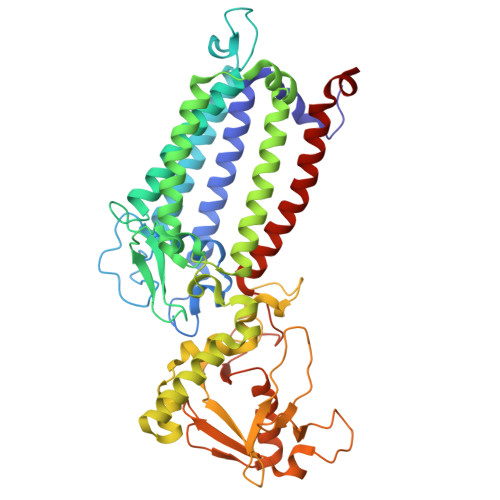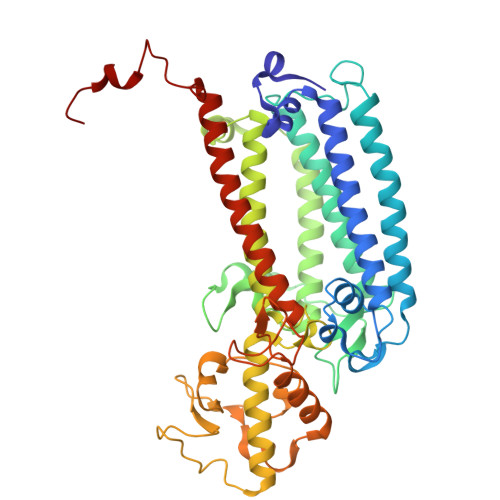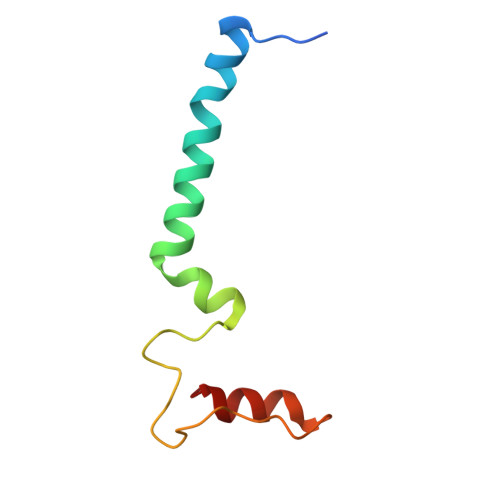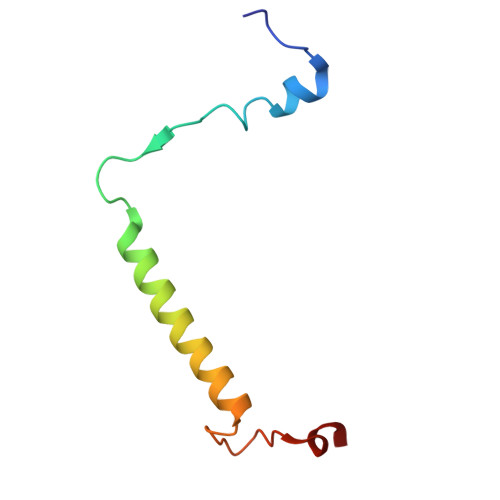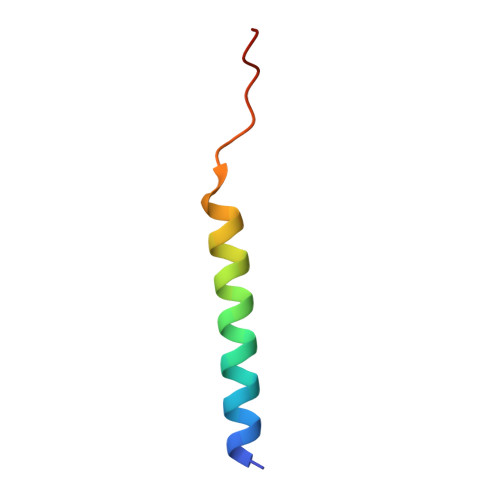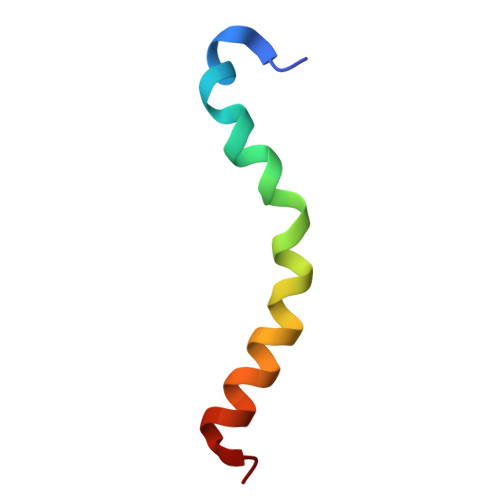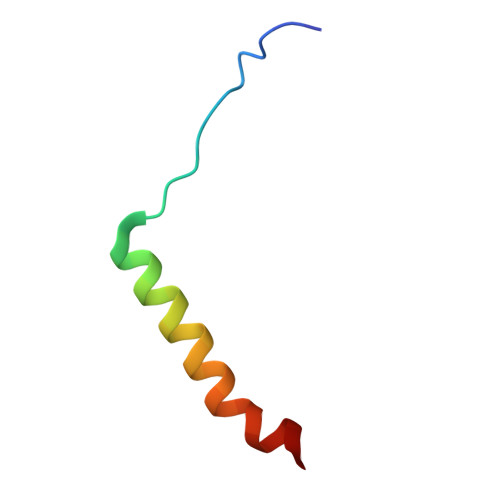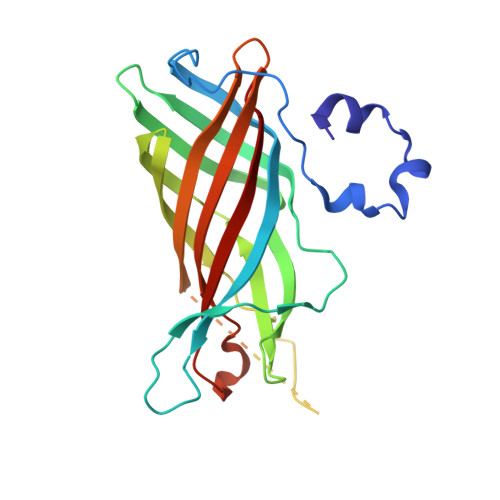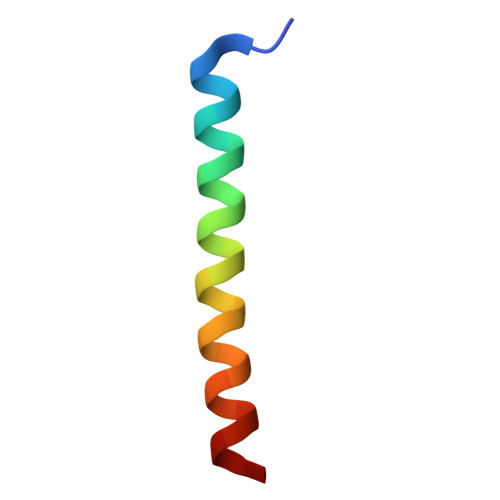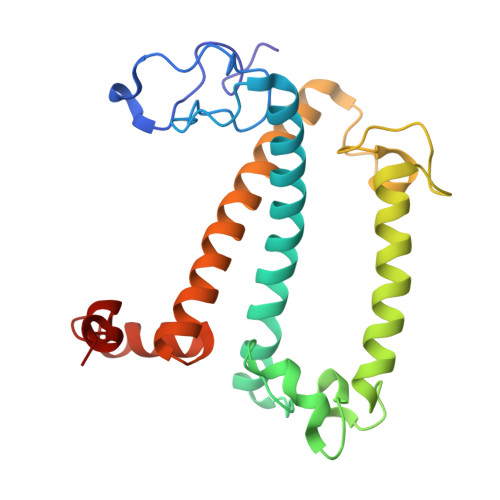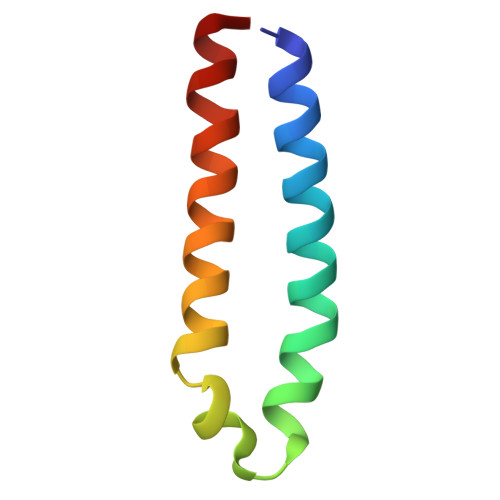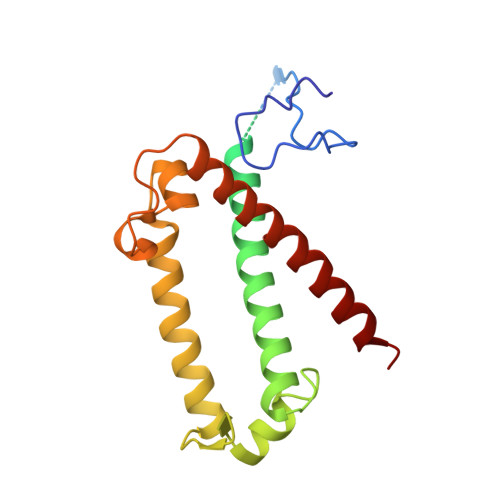Roles of multiple TEF30-associated intermediate complexes in the repair and reassembly of photosystem II in Chlamydomonas reinhardtii.
Wang, Y., Wang, C., Li, A., Liu, Z.(2025) Nat Plants 11: 1455-1469
- PubMed: 40579438
- DOI: https://doi.org/10.1038/s41477-025-02036-3
- Primary Citation of Related Structures:
9IIU, 9IMN, 9IOX, 9IS4 - PubMed Abstract:
During oxygenic photosynthesis, photosystem II (PSII) uses light energy for oxidizing water and reducing plastoquinone. It is susceptible to photodamage, and the damaged PSII is repaired through a sophisticated biological process assisted by numerous auxiliary proteins. Here we report the cryogenic electron microscopy structures of four PSII-repair complexes from Chlamydomonas reinhardtii associated with the Thylakoid Enriched Fraction 30 (TEF30, an orthologue of plant MET1) protein-namely, a TEF30-PSII core monomer (TEF30-C), two types of TEF30-PSII core dimers (types I and II, TEF30 2 -C 2 -I and TEF30 2 -C 2 -II) and a TEF30-C 2 S-type PSII-LHCII supercomplex (TEF30-C 2 S; S, strongly associated light-harvesting complex II trimer). TEF30 mediates the assembly of CP43 with the RC47 module by clamping on the stromal surfaces and prevents the premature association of peripheral antennae with PSII-C. In the transition from TEF30 2 -C 2 -I to TEF30 2 -C 2 -II, TEF30-C 2 S and mature C 2 S 2 , one PSII core slides along the dimerization interface against the adjacent one by 22-35 Å, generating a zigzagged surface for accommodating the peripheral antennae. These results suggest that the PSII repair process undergoes multiple TEF30-mediated intermediate states to form intact PSII-LHCII supercomplexes.
- Key Laboratory of Biomacromolecules (CAS), National Laboratory of Biomacromolecules, CAS Centre for Excellence in Biomacromolecules, Institute of Biophysics, Chinese Academy of Sciences, Beijing, China.
Organizational Affiliation:










